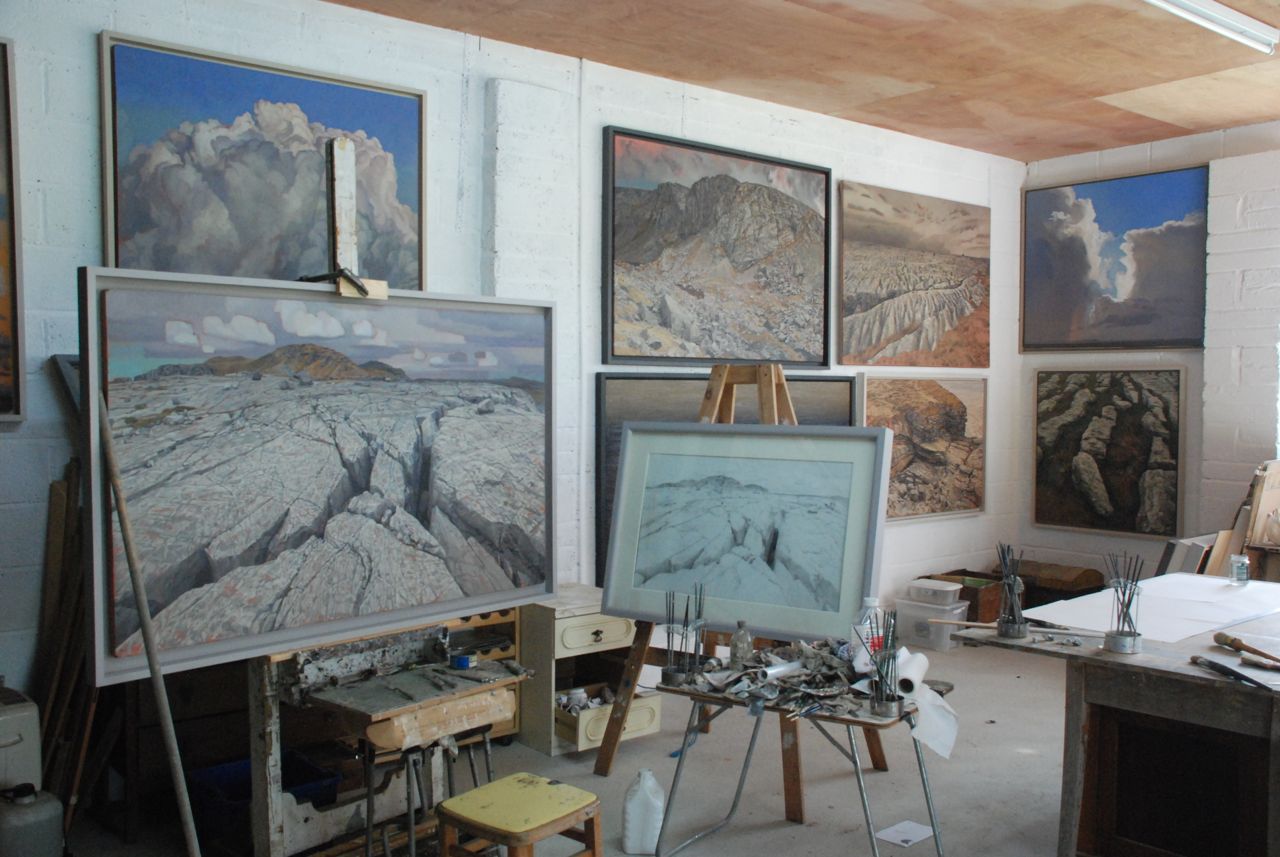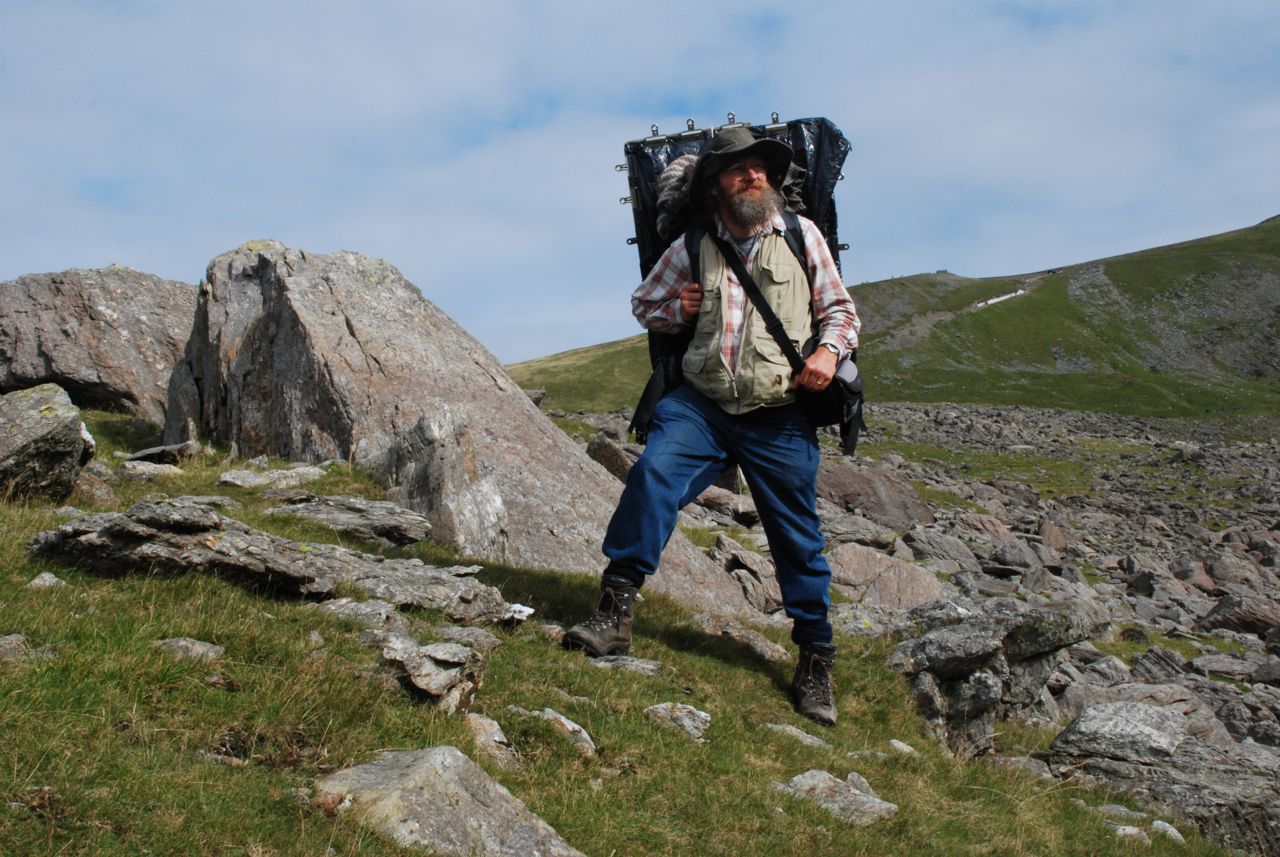INTRODUCTION
Practice
Drawing on the Rhinogs
… we see [the world] as being outside ourselves even though it is only a mental representation of it that we experience inside ourselves. (Magritte in Gablik [1970] 1985: 185-6)
Drawings made entirely in situ, and paintings made in the studio, develop in dialogue with each other. The drawings are an immediate but extended response to the place, the paintings however give a further purpose to the drawings. In this way, the material process is bound up with the developing reciprocity of subjectivity and nature. In the paintings I aim to achieve a denser interpretation of the subject, to make paintings that are objects of sustained contemplation that are different, but equivalent to the experience of observing in nature. The paintings in turn send me back to continue working on the drawings. My work in painting and drawing has passed through certain distinct phases in relation to places, themes and formal concerns: the North Sea coast, destroyed urban environments, and now locations in Wales and Cumbria. My practice of painting and drawing landscape had its origins in early childhood scrawling on any surface that would take a mark. I would draw railway tracks receding to infinity, roads rising over hills, descending out of sight into dips, re-appearing in the distance, etc.; I would draw objects like ships and aeroplanes, turning them around in space and situating myself in or among them. Out of this and other forms of play emerged a fascination with the appearance of objects in space and perspective that was like a drug – I have been addicted ever since! All this involved the pleasures of immediate perception, of the imaginary transformations of flatness into space and vice versa, of imagining the small to be large. This fascination is spontaneous, even though it became increasingly culturally informed or orientated. It is, and was from the beginning; aesthetic, pleasurable, disinterested, engaged, contemplative, active. Play and drawing involved the experience, manipulation and exploration of actual objects in space, one activity fed into the other. The motivation to paint and draw landscape has not diminished, even in the face of the critical adversity to which the very concept of landscape has been subjected. The ultimate explanation for this exceeds the reach of the critical theory paradigms by which it is condemned.

The Studio
Walking

Arriving at Clogwyn Du’r Arddu
Walking is integral to the working process. On mountains it often takes a good two hours to reach the location where I work on a drawing, repeatedly, some twenty to thirty times for each of the main drawings. By the time I return as it gets dark, in addition to the drawing time, I have often spent four or so hours walking with all the necessary kit. Prior to starting a drawing, I spend many days walking to discover subjects. Walking affords a heightened understanding of topography and scale that informs drawing itself. Being free to walk is at one with being free for the indeterminate attentiveness that constitutes aesthetic engagement.
Solitude
When we think of landscape and of an art derived from it, we may bring to mind first of all the activity of drawing and painting. The image is redolent, of a solitary wind-blown figure in front of an easel. It is almost as inherent a cliché as the garret or attic for the isolate artist in an urban parallel." (Cutts in 1987: 9)
I consider that the experience and value of solitude is mis-represented in strands of contemporary thought that combine to denigrate not only solitude, but also to deny the ontological self. Landscape painting concerns the environment of the self, ultimately self and cosmos. Gaston Bachelard describes the importance of solitude for reverie and the free exercise of the imagination:
The cosmic reverie … is a phenomenon of solitude which has its roots in the soul of the dreamer. … Cosmic reveries separate us from project reveries. They situate us in a world and not in a society. … cosmic images are the possessions of the solitary soul which is the principle of all solitude. (Bachelard [1960] 1969: 16-17)